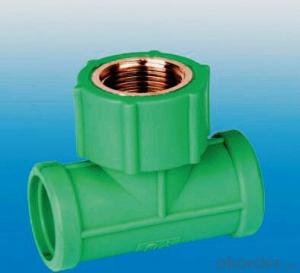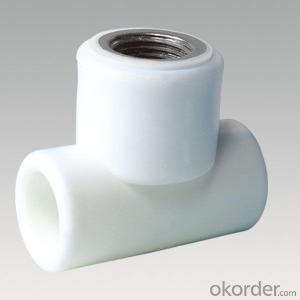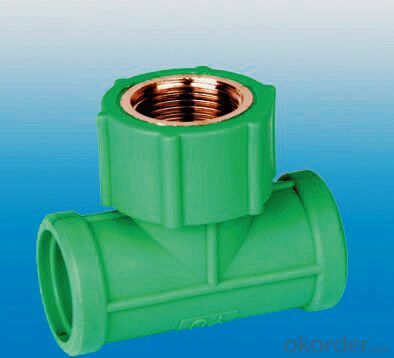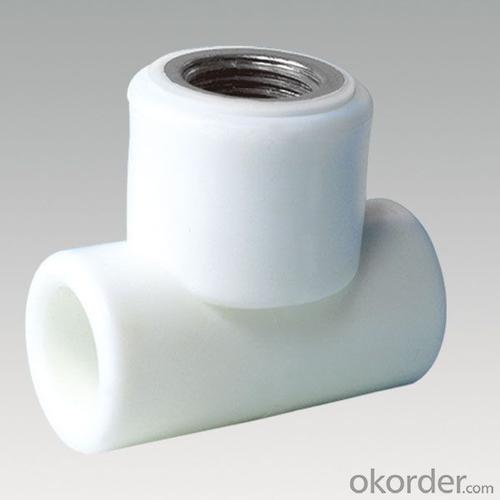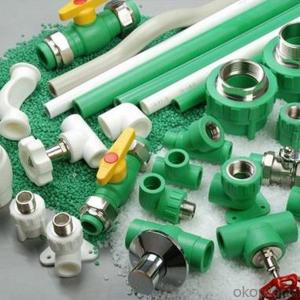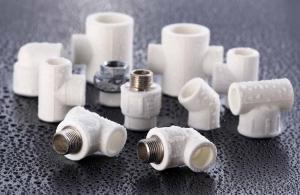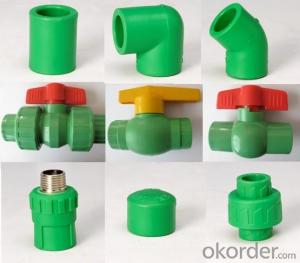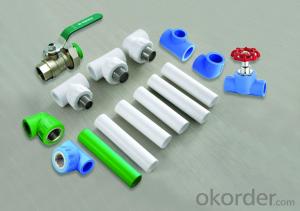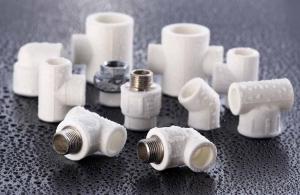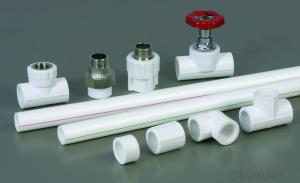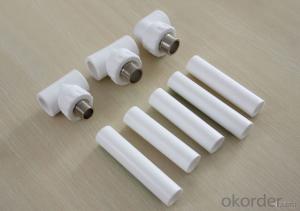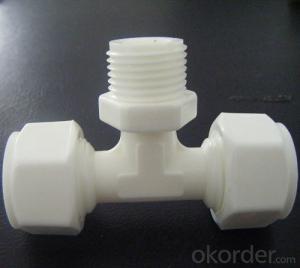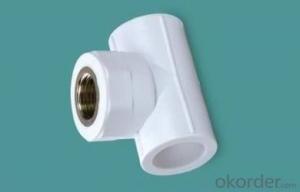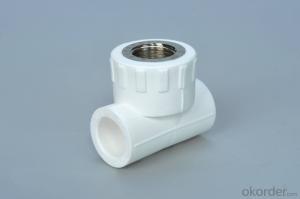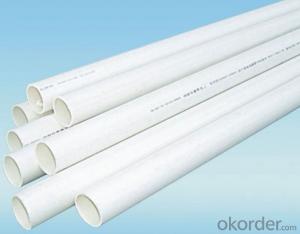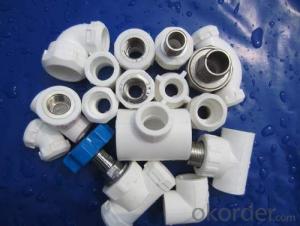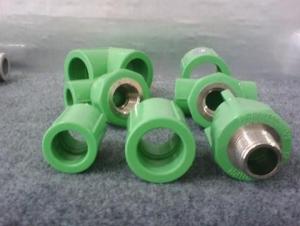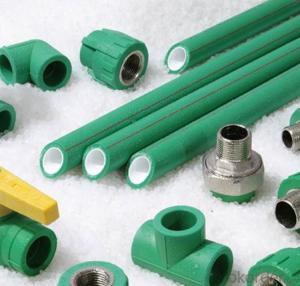75mm PPR Equal Tee Degree Plastic Pipe Fittings Used in Industrial Fields in China
- Loading Port:
- Ningbo
- Payment Terms:
- TT OR LC
- Min Order Qty:
- 1000 pc
- Supply Capability:
- 100000 pc/month
OKorder Service Pledge
OKorder Financial Service
You Might Also Like
Product Overview:
1.It is used in industrial fields, agriculture and irrigation.
2.Beauty appearance.
3.Thermal insulation and energy saving.
4.Easy installation
5.excellent heat resistance and pressure resistance
6.affordable price
Specifications
Standard: DIN8077/8078
Material: R200P from Korea
Size: DN20-63
Color: Green, White, Grey, Blue
Packaging Details:
1. Large carton: 515 x 400x 220 Cubage: 0.04532 M3
Small carton: 390x255x250 Cubage: 0.0248 M3
2. PE poly bag+ carton Delivery Detail: 15 days/ 20" container; 25 days/ 40HQ
Product Description
Pressure | Size(mm) | Pressure | Size(mm) |
PN1.25MPA | 20*2.0 |
PN1.6MPA | 20*2.3 |
25*2.3 | 25*2.8 | ||
32*2.9 | 32*3.6 | ||
40*3.7 | 40*4.5 | ||
50*4.6 | 50*5.6 | ||
63*5.8 | 63*7.1 | ||
75*6.8 | 75*8.4 | ||
90*8.2 | 90*10.1 | ||
110*10.0 | 110*12.3 |
Product Show
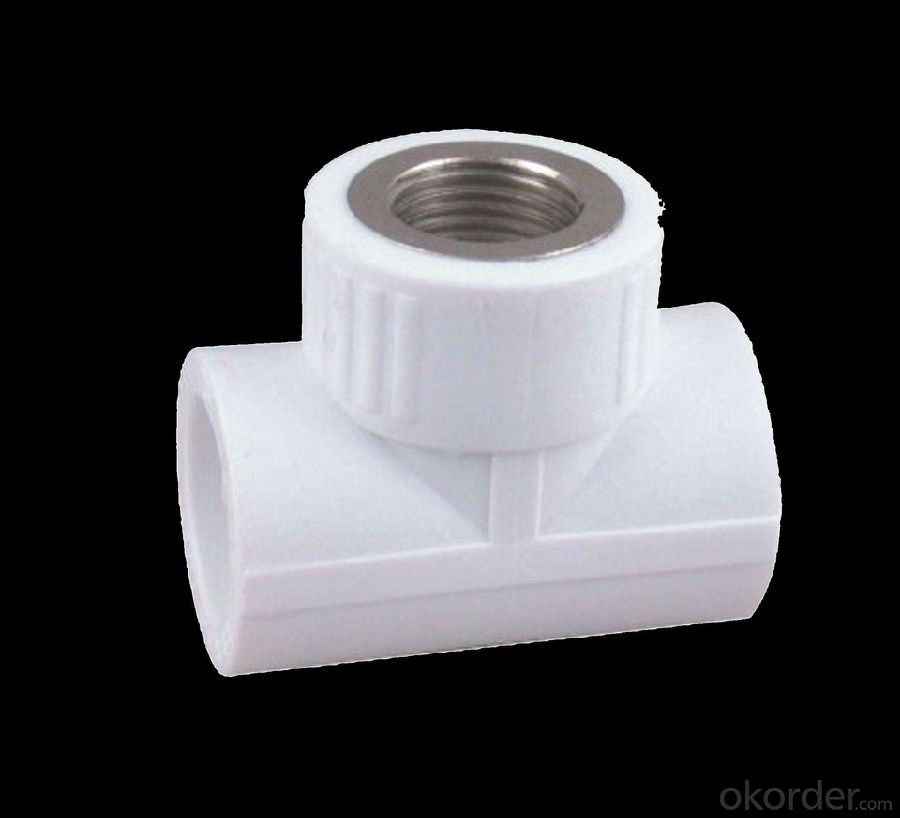
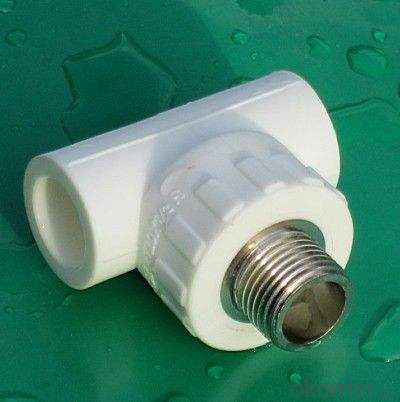
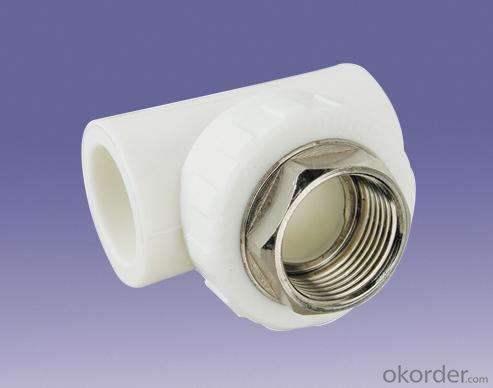
Our Advantages:
1) Healthy, bacteriological neutral, conforming to drinking water standards
2) Resistant to high temperatures, good impact strength
3) Convenient and reliable installation, low construction expenses
4) Excellent heat-insulation property from minimum thermal conductivity
5) Lightweight, convenient to transport and handle, good for labor-saving
6) Smooth inner walls reduce pressure loss and increase flow speed
7) Sound insulation (reduced by 40% compared to galvanized steel pipes)
8) Light colors and excellent design ensure suitability for both exposed and hidden installation
9) Recyclable, environment-friendly, accords with GBM standards
- Q: How do you connect plastic pipe fittings to pipes?
- To connect plastic pipe fittings to pipes, you typically use solvent cement or adhesive designed specifically for plastic piping. First, ensure both the fitting and pipe are clean and dry. Apply the solvent cement to the pipe and fitting, making sure to evenly coat both surfaces. Then, quickly insert the pipe into the fitting, giving it a slight twist to ensure proper distribution of the cement. Hold the joint firmly in place for a few seconds to allow it to set. It is important to follow the manufacturer's instructions and safety precautions when using solvent cement.
- Q: How do plastic pipe fittings compare to polyvinylidene fluoride (PVDF) fittings?
- Plastic pipe fittings and PVDF fittings differ in terms of their material composition and properties. Plastic pipe fittings are usually made of various types of plastic, such as PVC or CPVC, which offer good chemical resistance and affordability. On the other hand, PVDF fittings are specifically made from polyvinylidene fluoride, a highly durable and chemically resistant thermoplastic material. PVDF fittings are known for their excellent resistance to high temperatures, harsh chemicals, and UV radiation, making them suitable for demanding industrial applications. While plastic pipe fittings may be more cost-effective, PVDF fittings provide superior performance and longevity in challenging environments.
- Q: About plastic drain pipe expansion joint
- The setting of the expansion joint of the transverse pipe is that the transverse branch pipe and the transverse dry pipe are connected without the confluence pipe and are connected with the vertical pipe. When the length of the pipe section is larger than 2.2M, the expansion joint is arranged at the side of the cross pipe near the confluence pipe. When the drainage tube is arranged in the inner tube, setting expansion joints in the lateral wall near the well. The other side of the expansion joint of the transverse pipe should be provided with a fixed support.
- Q: Can plastic pipe fittings be used for gas piping?
- No, plastic pipe fittings should not be used for gas piping. Gas piping requires materials that are specifically designed and approved for gas applications, such as steel or copper fittings. Using plastic fittings for gas piping can pose serious safety risks and may lead to gas leaks or explosions.
- Q: How do plastic pipe fittings compare to copper fittings?
- Plastic pipe fittings are generally more cost-effective and easier to install compared to copper fittings. They are lightweight, resistant to corrosion, and have a longer lifespan. However, copper fittings tend to provide better durability and are more suitable for high-pressure applications. Ultimately, the choice between plastic and copper fittings depends on the specific needs and requirements of the plumbing system.
- Q: Are plastic pipe fittings resistant to extreme weather conditions?
- Yes, plastic pipe fittings are generally resistant to extreme weather conditions. They are designed to withstand a wide range of temperatures and weather conditions, including hot summers and cold winters. Plastic fittings are often made from durable materials that are resistant to UV radiation, moisture, and other environmental factors, ensuring their performance and longevity in various weather conditions.
- Q: How do you connect plastic pipe fittings to HDPE pipes?
- To connect plastic pipe fittings to HDPE pipes, you typically use a combination of heat and pressure. The HDPE pipe end is first heated using a specialized heating tool, which softens the plastic. Then, the softened pipe end is quickly inserted into the plastic pipe fitting, creating a secure and watertight connection as the plastic cools and hardens.
- Q: Can plastic pipe fittings be used for compressed air energy storage?
- No, plastic pipe fittings are not suitable for compressed air energy storage. Compressed air requires high-pressure containment, and plastic fittings may not have the necessary strength and durability to withstand the pressure, which could lead to leaks or ruptures. It is recommended to use fittings specifically designed for compressed air systems, such as metal fittings, to ensure safety and efficiency.
- Q: Do plastic pipe fittings require any special supports or hangers?
- Yes, plastic pipe fittings typically require special supports or hangers to ensure proper installation, stability, and to prevent sagging or stress on the pipes. These supports or hangers are designed to securely hold the pipes in place, maintain alignment, and distribute the weight evenly.
- Q: Do plastic pipe fittings require any special insulation or lagging?
- Yes, plastic pipe fittings do not require special insulation or lagging as they do not conduct heat like metal fittings. However, they may need to be protected from UV rays if installed outdoors.
Send your message to us
75mm PPR Equal Tee Degree Plastic Pipe Fittings Used in Industrial Fields in China
- Loading Port:
- Ningbo
- Payment Terms:
- TT OR LC
- Min Order Qty:
- 1000 pc
- Supply Capability:
- 100000 pc/month
OKorder Service Pledge
OKorder Financial Service
Similar products
Hot products
Hot Searches
Related keywords
